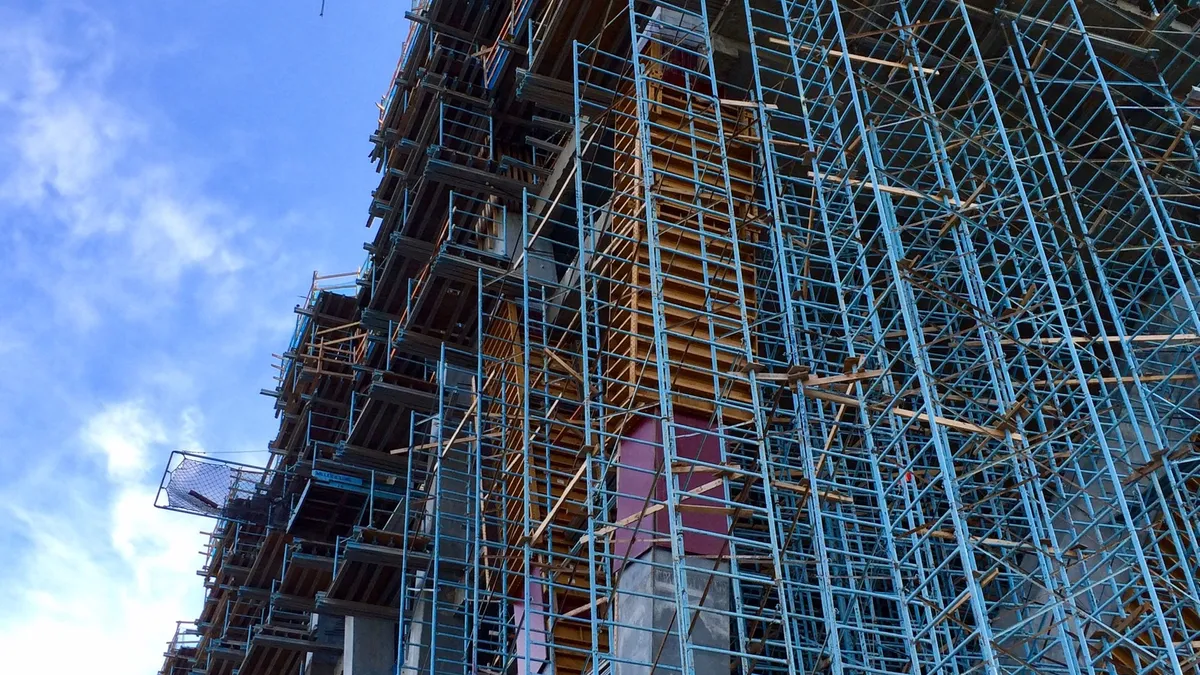Dive Brief:
-
A normalization in commercial construction activity drove the Dodge Momentum Index down for the second-consecutive month in August, falling 2.4% to a mark of 129.1 from a revised reading of 132.2 in July, according to Dodge Data & Analytics.
-
August’s 8.7% drop-off in commercial construction activity comes as several projects moved out of the planning stages, returning the category to a more “sustainable pace of development.”
-
Meanwhile, the institutional sector rose 7.3% in August, led by a $230 million hospital replacement project at the University of New Mexico, in Albuquerque.
Dive Insight:
Although the index has trended upward since the market’s trough, it tends to be volatile on a month-to-month basis due to the complexities of the planning process and the large scale of the projects involved. However, August marks the third-straight month of declines for the commercial sector, suggesting the market is slowly returning to equilibrium. Institutional fell back for the second month in a row.
Mirroring that trend, private nonresidential construction spending fell 1.9% from June to a seasonally adjusted annual rate of $428 billion in July. The pace of hiring slowed in August but was still up 3.2% year-over-year. The skilled-labor shortage is one factor contributing to that trend, with seven in 10 construction firms struggling to find workers, according to the Associated General Contractors of America.
Heading into 2017, Dodge forecast a 5% increase in all construction starts to a value of $712.9 billion. In the nonresidential sector, the data company was expecting an increase in retail, warehouse and office starts, with the latter driven by projects in suburban markets. Headquarters projects have also proven strong this year, with plans by Caterpillar, Marriott, GE and McDonald’s to break new ground in the major markets of Chicago, Boston and Washington, DC.
In its July report, Dodge said starts were on pace to hit $728.1 billion this year, driven by strong activity in the public works sector ahead of an expected major federal infrastructure spend. Those details, however, are still being ironed out.













